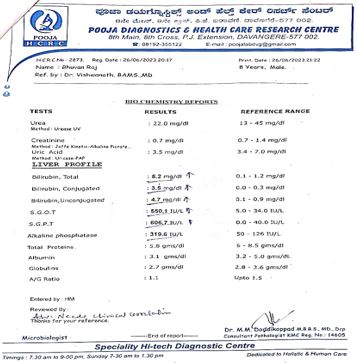Ayurvedic management of Kamala with reference to Viral Hepatitis
DOI:
https://doi.org/10.21760/jaims.10.1.43Keywords:
Kamala, Viral Hepatitis, JaundiceAbstract
Inflammation of the liver (Hepatitis) can be traced to many different causes, including viral infections, alcohol, fat accumulation in the liver, an incorrectly functioning immune system, exposure to chemicals and other toxins, and certain drugs. Most of those Asian countries that consider Hepatitis is an urgent public health issue, and have a national strategy in place. Awareness of all those concerned is essential for effective control measures as therapies are expensive with moderate efficacy and side-effects. As a result, in recent years there has been great interest in scientific field to evaluate the efficacy of Ayurveda formulations and single herbal remedies on Hepatitis. Kamala is one of the important, common clinical entities in Ayurveda, whose description appears to be most comprehensive and incorporates the disorders of Hepato-Biliary System of Modern Medicine. Numbers of clinical and experimental studies have been conducted to prove the scientific basis of the use of Ayurveda therapeutic for management of Hepatitis at primary care level. This study work had been carried out to found Ayurvedic Herbo-Mineral formulations which already proved their effect on Hepatitis (Kamala) through hepato-protective activity.
Downloads
References
Choo QL, Kuo G, Weiner AJ, Overby LR, Bradley DW, et al. Isolation of a cDNA clone derived from a blood-borne non-A, non-B viral hepatitis genome. Science. 1989;244:359-362.
Bradley DW. Virology, molecular biology, and serology of hepatitis C virus. Transfus Med Rev. 1992;6:93-102.
Farci P, Gerin JL, Aragona M, Lindsey I, Crivelli O, et al. Diagnostic and prognostic significance of the IgM antibody to the hepatitis delta virus. JAMA. 1986;255:1443-1446.
Irshad M, Acharya SK. Status of hepatitis viral markers in patients with acute and chronic liver diseases in northern India. Intervirology. 1994;37:369-372.
Tandon BN, Gandhi BM, Joshi YK. Etiological spectrum of viral hepatitis and prevalence of markers of hepatitis A and B virus infection in north India. Bull World Health Organ. 1984;62:67-73.
Acharya SK, Batra Y, Hazari S, Choudhury V, Panda SK, et al. Etiopathogenesis of acute hepatic failure: Eastern versus Western countries. J Gastroenterol Hepatol. 2002;17:S268-S273.
Irshad M, Singh S, Ansari MA, Joshi YK. Viral Hepatitis in India: A Report from Delhi. Glob J Health Sci. 2010;2:96.
Sharma AK. Kayachikitsa. Vol. 2. Varanasi: Choukhamba Publishers; 2010. p. 601-612.
Schuppan D, Jia JD, Brinkhaus B, Hahn EG. Herbal products for liver diseases: A therapeutic challenge for the new millennium. Hepatology. 1999;30:1099-1104.
Girish C, Pradhan SC. Indian herbal medicines in the treatment of liver diseases: Problems and promises. Fundam Clin Pharmacol. 2012;26:180-189.
Byadgi PS, Pandey AK. A textbook of kayachikitsa. Vol. II. New Delhi: Chaukhambha Publications; 2014. p. 505.
Sharma PV. Susruta Samhita Uttara Sthana. 44/6 with English Translation of text and Dalhana’s commentary along with critical notes. Varanasi: Chaukhamba Vishvabharati Oriental Publishers and Distributors; 2004.
Vagbhata. Astanghrdayam. Nidana Stana 13/19 with the commentaries Sarvangasundara of Arunadata and Ayurvedarasayana of Hemadri. Varanasi: Chaukhambha Orientalia.
Sharma RK, Dash B. Charaka Samhita, Cikitsa Stana 16/36, Text with English Translation & Critical Exposition based on Cakrapani Datta’s Ayurveda Dipika. Varanasi: Chaukhamba Vishvabharti; 2007.
Sujatha N. Clinical evaluation of Triphala in Kamala vis-à-vis infective hepatitis and its effect on experimentally induced hepatic damage on albino rats. B.H.U. Varanasi; 2006.
Sujatha N. Clinical evaluation of Virecana Cikitsa and a herbal compound in hepatitis B [Ph.D]. B.H.U. Varanasi; 2010.
Kushwaha HCS, editor. Charaka Samhita. 1st ed. Chikitsa Sthana Chapter 3, Verse 142. Varanasi: Chaukhambha Orientalia; 2009. p. 96.
Tripathi I. Rasaratna Samuchchaya. 3rd ed. Varanasi: Chaukhambha Sanskrit Bhawan; 2006. p. 252.














